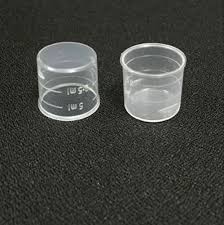What is 5 ml?
Definition of Milliliters
A milliliter (ml) is a unit of volume in the metric system. It is used to measure small quantities of liquid. One milliliter is equal to one-thousandth of a liter. In simpler terms, if you imagine dividing a liter of water into 1,000 equal parts, each part would be one milliliter.
Conversion to Fluid Ounces
To put it in another perspective, 5 ml is equivalent to 0.17 fluid ounces. This conversion is particularly useful in the United States, where fluid ounces are commonly used to measure liquids.
Everyday Examples of 5 ml
You might encounter 5 ml measurements in various daily situations. For instance, a teaspoon usually holds about 5 ml of liquid. This is a common measurement used in cooking and medication dosages.
Importance of Measuring 5 ml
In Cooking
Accurate measurements are crucial in cooking, especially when dealing with small quantities. For instance, adding 5 ml of vanilla extract to a cake batter can make a significant difference in the flavor.

In Medicine
Measuring 5 ml is vital in the medical field. Medicines often need to be taken in precise doses, and 5 ml is a common measurement for liquid medications. Using a proper measuring spoon or syringe ensures that you take the right amount.
In Science
In scientific experiments, precise measurements are essential for accurate results. Scientists often measure liquids in milliliters to maintain consistency in their experiments.
How to Measure 5 ml Accurately
Using a Teaspoon
A standard teaspoon holds approximately 5 ml. This method is simple and accessible since most households have teaspoons readily available.
Using a Syringe
A syringe, without a needle, is an accurate tool for measuring 5 ml of liquid. It is especially useful for administering medication to children or pets.
Using a Measuring Cup
For cooking and baking, a measuring cup with milliliter markings is a reliable tool. It ensures you add the right amount of liquid ingredients to your recipes.
Converting 5 ml to Other Units
Fluid Ounces
As mentioned earlier, 5 ml is equivalent to 0.17 fluid ounces. This conversion is helpful when following recipes from the United States.
Teaspoons and Tablespoons
In the culinary world, it’s useful to know that 5 ml equals one teaspoon. For larger measurements, note that 15 ml equals one tablespoon, so 5 ml is one-third of a tablespoon.
Drops
In some cases, especially in pharmaceuticals, liquids are measured in drops. Approximately 100 drops make up 5 ml, although this can vary slightly depending on the liquid’s viscosity.
Practical Uses of 5 ml
In Cooking and Baking
When a recipe calls for 5 ml of an ingredient, using the correct measurement ensures the dish turns out as intended. This precision is especially important in baking, where even small deviations can affect the final product.
In Taking Medication
Accurately measuring 5 ml of medication ensures you take the right dose. This is crucial for the medication’s effectiveness and to avoid potential side effects.

In Gardening
Gardeners often measure liquid fertilizers and pesticides in milliliters. Using the correct amount helps plants grow healthy without over-fertilizing or damaging them.
Tools for Measuring 5 ml
Measuring Spoons
Measuring spoons are a common kitchen tool that includes a 5 ml (teaspoon) measurement. They are easy to use and often come in sets with various sizes.
Oral Syringes
Oral syringes are ideal for measuring and administering liquid medications. They are precise and easy to use, making them perfect for children and pets.
Graduated Cylinders
In scientific settings, graduated cylinders are used to measure liquids accurately. They are marked with precise milliliter increments.
Tips for Accurate Measurement
Use Proper Tools
Always use tools designed for measuring liquids, like measuring spoons or syringes. Avoid guessing or using tools not meant for measuring.
Check Measurements Twice
Double-checking your measurements ensures accuracy. This is especially important in cooking, baking, and medicine.
Follow Instructions
Whether you are following a recipe or taking medication, always adhere to the instructions provided. Accurate measurement is key to achieving the desired outcome.
Why 5 ml Matters
Precision in Cooking
In cooking and baking, precision is essential. Measuring 5 ml accurately can make a significant difference in the taste and texture of your food.
Safety in Medicine
Taking the correct dose of medication is crucial for your health. Using accurate measurements ensures you receive the intended benefits without risking an overdose.
Consistency in Science
In scientific research, consistent measurements are vital. Measuring 5 ml accurately helps maintain the integrity of experiments and research findings.
Common Mistakes and How to Avoid Them
Using Incorrect Tools
Using tools not designed for measuring liquids, like regular spoons, can lead to inaccurate measurements. Always use proper measuring tools.
Misreading Measurements
Misreading the markings on measuring tools can result in incorrect amounts. Take your time to read the measurements carefully.
Skipping Measurements
Sometimes, people skip measuring small quantities, thinking they can estimate accurately. This can lead to inconsistent results, especially in baking and medicine.
Conclusion
Understanding and accurately measuring 5 ml is essential in various aspects of daily life, from cooking and baking to taking medication and conducting scientific research. By using the proper tools and following instructions carefully, you can ensure precision and achieve the desired outcomes in your tasks. Remember, a small measurement like 5 ml can have a significant impact, so it’s worth taking the time to measure accurately.

